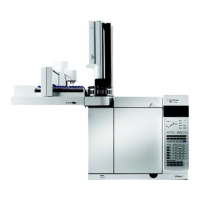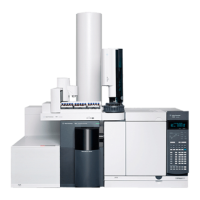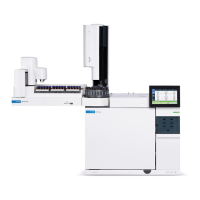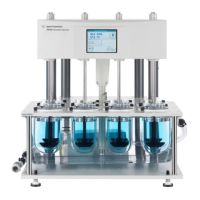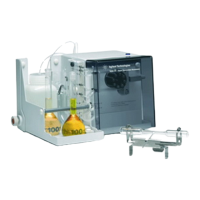Troubleshooting Tasks 8
Agilent 7890 Series Troubleshooting 201
To Check for a Plugged FID Jet
The most common cause of FID ignition problems is a plugged
or partially plugged jet. If the jet is not completely plugged and
the flame still ignites, a secondary symptom will be lengthening
peak retention times. Jet plugging is most common with
thick-film/high bleed or packed columns and high temperature
applications. It is best to operate the column oven within the
temperature limits of the column and also to operate the FID at
least 20 °C hotter than the maximum oven temperature in the
GC method. If the FID jet is becoming plugged, actual H2,
Makeup and Capillary carrier flows will be lower than the
values indicated by the GC.
To check for a plugged FID jet:
1 Leave the column installed in the FID. If already removed,
cap off the detector column fitting in the oven. (Leaving the
column installed will determine if the column is installed too
high in the jet, plugging the orifice.)
2 Set the makeup flow to “Off”. Confirm a reading on the GC
display of 0.0 mL/min for actual makeup flow. If not 0.0 –
follow the procedure To Zero the EPC Module Pressure
Sensor.
3 Set the hydrogen flow to 75 mL/minute (increase the H2
supply pressure as needed to achieve this flow rate setting.)
4 Monitor the makeup flow “Actual” reading
If the makeup flow is indicating a value in excess of
1.0 mL/min, this indicates that the jet is plugged or partially
plugged; pressure is backing up from the H2 channel into the
makeup channel of the EPC system, resulting in a false flow
indication on the makeup channel.
Alternately, remove the jet from the housing and hold it up to a
light source. Check the holes in the jet for contamination. If
plugged, replace the jet.

